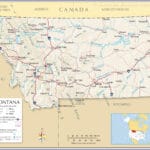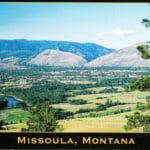Kalispell, Montana, nestled in the scenic Flathead Valley, is experiencing a remarkable population surge. This article delves into the data behind this growth, exploring its demographic and economic impacts, and considering the challenges and opportunities it presents for the community.
Growth & Demographics: A Changing Kalispell
Kalispell’s population has exploded in recent years. Starting from a 2020 census population of 24,924, it’s projected to reach 31,540 by 2024. This represents a 26.54% increase and an annual growth rate of 5.53%, significantly outpacing national averages and positioning Kalispell as one of the fastest-growing cities of its size in the United States. The population density is approximately 1,712.7 people per square mile, highlighting the increasing urbanization of this once smaller Montana city. This growth likely reflects broader trends of people seeking a different lifestyle, particularly in the wake of the COVID-19 pandemic, which may have accelerated pre-existing migration patterns.
The median age in Kalispell is 35.8 (Male: 34.2, Female: 37.9), suggesting a mix of established families and younger professionals. However, the city’s demographics are evolving. The adult population stands at 19,438, with a growing senior demographic of 4,519. While 2022 data suggests that approximately 90% of residents identify as White (Non-Hispanic), a more detailed breakdown of racial and ethnic groups is needed to fully understand the diversity of Kalispell’s community. Approximately 1-2% of Kalispell’s population identify as either Black/African American, Indigenous, or Asian. Interestingly, the Multiracial population represents a significant and growing segment, around 5% of the total population. Roughly 3% of residents identify as Hispanic or Latino. Understanding these demographic shifts is crucial for community planning and resource allocation.
Economic Landscape: Drivers of Growth
What fuels this rapid expansion? Several factors likely contribute to Kalispell’s attractiveness.
Natural Beauty & Recreation:
Access to outdoor recreation is a significant draw. Flathead Lake and the surrounding mountains offer opportunities for hiking, biking, fishing, skiing, kayaking, and more. This resonates with individuals seeking a lifestyle connected to nature.
Cost of Living:
While rising, Kalispell’s cost of living can still be more affordable than other Western mountain towns like Bozeman, Montana, or Bend, Oregon. This is a key factor for individuals and families considering relocation.
Small-Town Charm & City Amenities:
Kalispell offers a blend of small-town charm and city conveniences, appealing to those who desire community connection alongside access to amenities, healthcare, and decent schools.
Economic Impacts: Healthcare, Tourism, and Beyond
Healthcare & Social Assistance is the dominant industry in Kalispell, employing over 2,482 people, anchored by institutions like Logan Health Medical Center. Retail Trade (2,137 employees) and Accommodation & Food Services (1,129 employees) thrive, fueled by tourism and local spending. High-paying sectors like Professional, Scientific, & Technical Services ($67,614 average salary) and Finance & Insurance ($57,887 average salary) indicate economic diversification. However, Kalispell’s unemployment rate (5.6%), while lower than the national average, faces a recent decline in job growth (-1.2%).
Challenges and Opportunities for Kalispell’s Future
Kalispell’s rapid growth presents challenges: increased traffic congestion, strain on infrastructure, and potential impacts on community dynamics. Maintaining its unique character while accommodating new residents requires thoughtful urban planning and sustainable development practices. The future of Kalispell hinges on navigating this delicate balance. Some analysts believe the current growth may be transitory, while others anticipate continued growth due to remote work trends. Further research and nuanced perspectives are needed to fully understand Kalispell’s future trajectory.
Exploring Further: Knox Township Columbiana County Ohio and Langtry ND
For insights into other unique communities, explore articles on Knox Township, Columbiana County, Ohio, and Langtry, North Dakota.
This analysis provides a foundation for understanding Kalispell’s population dynamics. Future research exploring specific drivers of growth, community perspectives, and long-term projections will further enrich this understanding. Citing all data sources will also strengthen the credibility of this analysis.
- Discover Long Black Pepper: Flavor & Health Benefits - April 25, 2025
- Shocking Twists: The Grownup Review: Unreliable Narration - April 25, 2025
- A Quiet Place Book vs Movie: A Deep Dive - April 25, 2025















